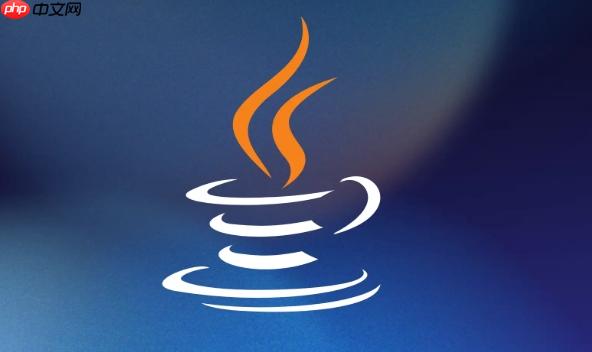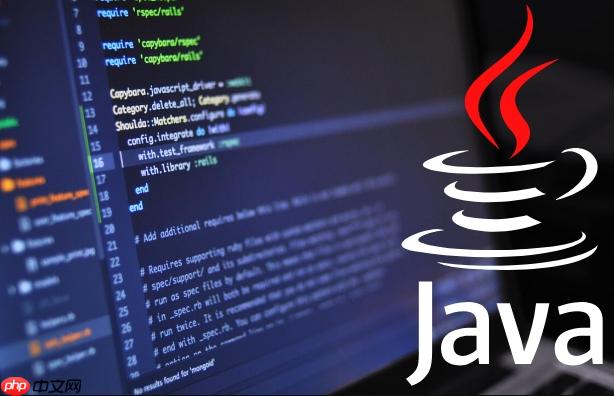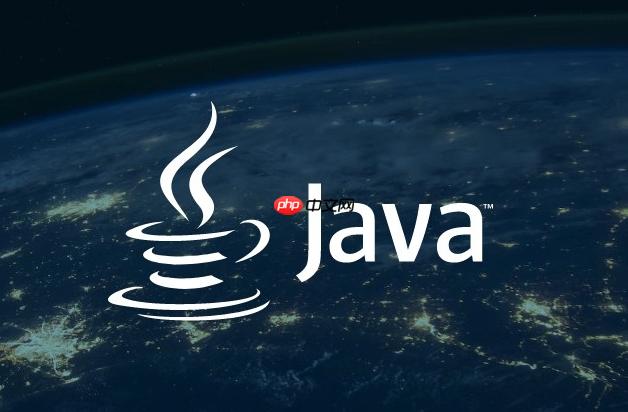java操作二进制文件需使用字节流,1.fileinputstream和fileoutputstream提供基础读写能力,2.bufferedinputstream和bufferedoutputstream提升效率,3.读取大型文件应分块读取避免内存溢出,4.使用datainputstream和dataoutputstream处理基本数据类型,5.通过bytebuffer设置字节序解决平台间数据交换问题。 fileinputstream和fileoutputstream是操作二进制文件的基础类, bufferedinputstream和bufferedoutputstream通过缓冲机制提高读写效率,尤其适用于大文件处理。为避免一次性加载大文件导致内存溢出,应采用分块读取方式,如结合bufferedinputstream和byte数组循环读取。dataoutputstream提供writeint、writedouble、writeutf等方法写入特定格式数据,datainputstream则通过对应read方法读取,需注意读写顺序一致性和writeutf编码兼容性。不同平台字节序可能不同,java默认使用大端序,处理小端序数据时可使用bytebuffer并设置byteorder.little_endian以实现正确解析。

Java操作二进制文件,核心在于使用字节流,而非字符流。字符流处理的是文本,而二进制文件则需要直接操作字节数据。掌握 InputStream 和 OutputStream 的子类,特别是 FileInputStream 和 FileOutputStream,以及 BufferedInputStream 和 BufferedOutputStream,能有效进行二进制文件的读写。

FileInputStream 和 FileOutputStream 提供了最基础的二进制文件读写能力,而带缓冲的流则可以显著提高效率。
读取大型二进制文件,效率是关键。直接一次性读取到内存可能导致 OutOfMemoryError。 解决办法是使用缓冲流,并分块读取。 例如,可以使用 BufferedInputStream 结合 byte[] 数组,每次读取固定大小的字节块。
立即学习“Java免费学习笔记(深入)”;

try (BufferedInputStream bis = new BufferedInputStream(new FileInputStream("large_binary_file.dat"))) {
byte[] buffer = new byte[8192]; // 8KB 缓冲区
int bytesRead;
while ((bytesRead = bis.read(buffer)) != -1) {
// 处理读取到的字节块 (buffer, 0, bytesRead)
// 例如,将这部分数据写入另一个文件,或者进行其他处理
processData(buffer, 0, bytesRead);
}
} catch (IOException e) {
e.printStackTrace();
}
void processData(byte[] buffer, int offset, int length) {
// 在这里处理从文件中读取到的字节数据
// 这是一个占位符,你需要根据你的具体需求来实现这个方法
// 例如,你可以将这部分数据写入另一个文件:
// try (FileOutputStream fos = new FileOutputStream("output.dat", true)) {
// fos.write(buffer, offset, length);
// } catch (IOException e) {
// e.printStackTrace();
// }
// 或者你可以对这些数据进行解析和处理
System.out.println("Processing data: " + length + " bytes");
}这段代码展示了如何使用 BufferedInputStream 和一个 8KB 的缓冲区来分块读取大型二进制文件。processData 方法是一个占位符,你需要根据你的具体需求来实现这个方法,比如将读取到的数据写入另一个文件,或者对这些数据进行解析和处理。
值得注意的是,根据文件内容和处理需求,缓冲区大小的选择会影响性能。 适当调整缓冲区大小,可以进一步优化读取速度。

写入二进制数据不仅仅是写入原始字节,有时还需要按照特定的格式写入,例如写入整数、浮点数等。Java 提供了 DataInputStream 和 DataOutputStream 来处理这些基本数据类型的读写。
try (DataOutputStream dos = new DataOutputStream(new FileOutputStream("data.bin"))) {
dos.writeInt(12345); // 写入一个整数
dos.writeDouble(3.14159); // 写入一个双精度浮点数
dos.writeUTF("Hello, Binary World!"); // 写入一个UTF-8编码的字符串
} catch (IOException e) {
e.printStackTrace();
}
try (DataInputStream dis = new DataInputStream(new FileInputStream("data.bin"))) {
int intValue = dis.readInt();
double doubleValue = dis.readDouble();
String stringValue = dis.readUTF();
System.out.println("Integer: " + intValue);
System.out.println("Double: " + doubleValue);
System.out.println("String: " + stringValue);
} catch (IOException e) {
e.printStackTrace();
}DataOutputStream 提供了 writeInt, writeDouble, writeUTF 等方法,可以方便地写入各种数据类型。 相应地,DataInputStream 提供了 readInt, readDouble, readUTF 等方法来读取这些数据。 注意,写入和读取的顺序必须一致,否则会导致数据错乱。 此外,writeUTF 使用的是修改过的 UTF-8 编码,与标准的 UTF-8 略有不同,需要注意兼容性。
字节序(Endianness)指的是多字节数据在内存中的存储顺序。 大端序(Big-Endian)将高位字节放在低地址,小端序(Little-Endian)则相反。 不同的平台可能使用不同的字节序。 如果需要在不同平台之间交换二进制数据,就需要考虑字节序的转换。
Java 默认使用大端序。 如果需要处理小端序的数据,可以使用 ByteBuffer 类来进行转换。
import java.nio.ByteBuffer;
import java.nio.ByteOrder;
import java.io.FileOutputStream;
import java.io.IOException;
public class EndianExample {
public static void main(String[] args) {
int value = 0x12345678;
// 写入大端序数据
try (FileOutputStream fosBigEndian = new FileOutputStream("big_endian.dat")) {
ByteBuffer buffer = ByteBuffer.allocate(4);
buffer.order(ByteOrder.BIG_ENDIAN); // 设置为大端序
buffer.putInt(value);
fosBigEndian.write(buffer.array());
} catch (IOException e) {
e.printStackTrace();
}
// 写入小端序数据
try (FileOutputStream fosLittleEndian = new FileOutputStream("little_endian.dat")) {
ByteBuffer buffer = ByteBuffer.allocate(4);
buffer.order(ByteOrder.LITTLE_ENDIAN); // 设置为小端序
buffer.putInt(value);
fosLittleEndian.write(buffer.array());
} catch (IOException e) {
e.printStackTrace();
}
System.out.println("Data written in both Big Endian and Little Endian formats.");
}
}这段代码演示了如何使用 ByteBuffer 设置字节序,并写入大端序和小端序的整数数据。通过 buffer.order(ByteOrder.LITTLE_ENDIAN) 可以将字节序设置为小端序。 在读取二进制数据时,也需要使用 ByteBuffer 并设置正确的字节序,才能正确解析数据。
以上就是如何使用Java操作二进制文件 Java读写二进制文件实例的详细内容,更多请关注php中文网其它相关文章!

每个人都需要一台速度更快、更稳定的 PC。随着时间的推移,垃圾文件、旧注册表数据和不必要的后台进程会占用资源并降低性能。幸运的是,许多工具可以让 Windows 保持平稳运行。

Copyright 2014-2025 https://www.php.cn/ All Rights Reserved | php.cn | 湘ICP备2023035733号